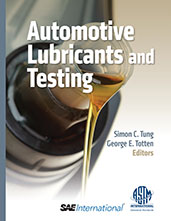Technical Paper
Water-Glycol Hydraulic Fluid Evaluation by ASTM D 2882: Significant Contributors to Erroneous Results
1996-08-01
961740
One of the most commonly used tests to evaluate the antiwear properties of a hydraulic fluid is ASTM D 2882 which is based on a Vicker's V-104 vane pump. Although this is a commonly used test, the results are subject to numerous potential problems in both testing procedure and pump hardware. In this paper, the particular focus will be placed on potential problems that may be encountered with testing of water-glycol hydraulic fluids which may lead to erroneous and non-reproducible results.


